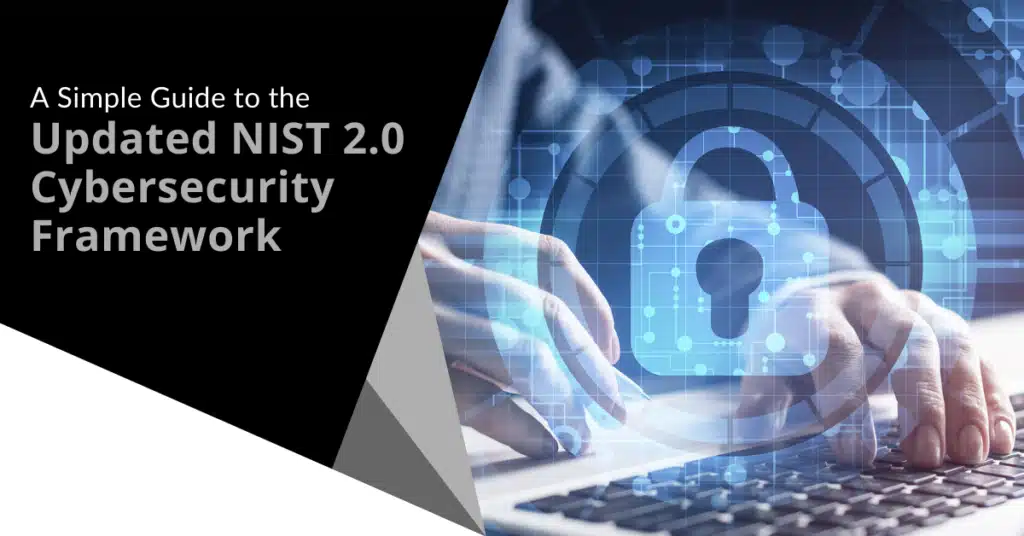|
Getting your Trinity Audio player ready...
|

Keeping up with security challenges poses a difficulty, for organizations of all sizes. The period between February and March 2024 saw a 69.8% increase in reported global security incidents. To safeguard your organization, it is crucial to take on an approach to cybersecurity. We introduce to you the NIST Cybersecurity standard.
The National Institute of Standards and Technology (NIST) created the Cybersecurity Framework (CSF) providing a method for managing and minimizing cybersecurity risks across industries. In 2024 this framework was upgraded to NIST CSF 2.0 a revision that builds upon the success of its predecessor by offering an efficient and adaptable strategy. This handbook breaks down the framework to ensure it is user friendly for both small and large enterprises.
Understanding the Essence of NIST CSF 2.0
At the heart of CSF 2.0 are five interconnected Functions; Identify, Protect, Detect, Respond and Recover. These Functions offer an overview of cybersecurity risk management enabling organizations to respond to potential threats.
1. Identify
This function entails recognizing and comprehending your organizations assets, cyber risks and vulnerabilities before implementing measures.
2. Protect
The Protect function concentrates on deploying measures to prevent, detect and mitigate cybersecurity risks through tools, like firewalls, intrusion detection systems and data encryption.
3. Detect
Detecting cybersecurity incidents early is essential to minimize harm. The Detect function stresses the significance of having systems, in position to recognize and report activities.
4. Respond
Responding involves taking steps during a cybersecurity incident, such as containment, eradication, recovery and learning from the experience.
5. Recover
The Recover function concentrates on getting operations to normal after a cybersecurity breach by engaging in tasks like data recovery, system restoration and planning for business continuity.
Profiles and Tiers: Mending the NIST Framework
The updated framework introduces Profiles and Tiers to enable organizations to tailor their cybersecurity procedures according to their requirements risk tolerance levels and available resources.
Profiles
Profiles align Functions, Categories and Subcategories with an organizations business needs.
Tiers
Tiers offer insight, into how an organization perceives cybersecurity risks and the strategies it implements to handle them ranging from Partial (Tier 1) to Adaptive (Tier 4).
There are advantages of implementing NIST CSF 2.0
- Enhanced Cybersecurity Measures: Organizations can enhance their cybersecurity program significantly by adopting NIST CSF 2.0.
- Reduced Risk of Cyberattacks: The framework assists organizations in identifying and addressing cybersecurity risks thereby decreasing the chances of cyberattacks.
- Enhanced Compliance: NIST CSF 2.0 is, in alignment with industry standards and regulations aiding organizations in meeting compliance obligations.
- Improved Communication: By offering a language for discussing cybersecurity risks the framework enhances communication within the organization.
- Cost Savings: Implementing NIST CSF 2.0 helps prevent cyberattacks and minimize the impact of incidents potentially resulting in cost savings.
Starting with NIST CSF 2.0
To kick off your journey with NIST CSF 2.0 consider these steps:
- Familiarize yourself with the framework; Go through the NIST CSF 2.0 publication to grasp its Core Functions and categories.
- 2. Evaluate your cybersecurity stance; Conduct an assessment to pinpoint any gaps or vulnerabilities in your existing cybersecurity protocols.
- 3. Develop a cybersecurity strategy; Create a plan based on your assessment to outline how you will integrate NIST CSF 2.0 within your organization.
- 4. Seek assistance if necessary; Reach out to a managed IT services partner for advice and assistance in implementing NIST CSF 2.0.
By following these guidelines, you can kickstart the implementation of NIST CSF 2.0 within your organization bolstering your cybersecurity posture.
Book a NIST Cybersecurity Assessment Today
NIST CSF 2.0 serves as a resource, for organizations of all sizes looking to manage and mitigate cybersecurity risks.
By following the guidelines provided in the framework you can enhance your organizations cybersecurity program significantly. If you aim to bolster your company’s cybersecurity stance, NIST CSF 2.0 serves as a step. We are here to help conduct a cybersecurity assessment to pinpoint assets requiring safeguarding and potential security threats, within your network and collaborate with you on a strategy.
Feel free to reach out today to arrange a cybersecurity assessment session.
Twintel has grown into an expansive, full team of IT services professionals, acting as the outsourced IT department of non-profits, small to mid-size businesses, and enterprise-level corporations in Orange County, across California, and nationally.
Today, it’s the strength and deep expertise of the Twintel team that drives positive outcomes for clients. Each of the support staff, technicians, and engineers works diligently each day to make sure that the companies served have the seamless, secure, and stable IT environments needed to allow them to pursue their organizational objectives.